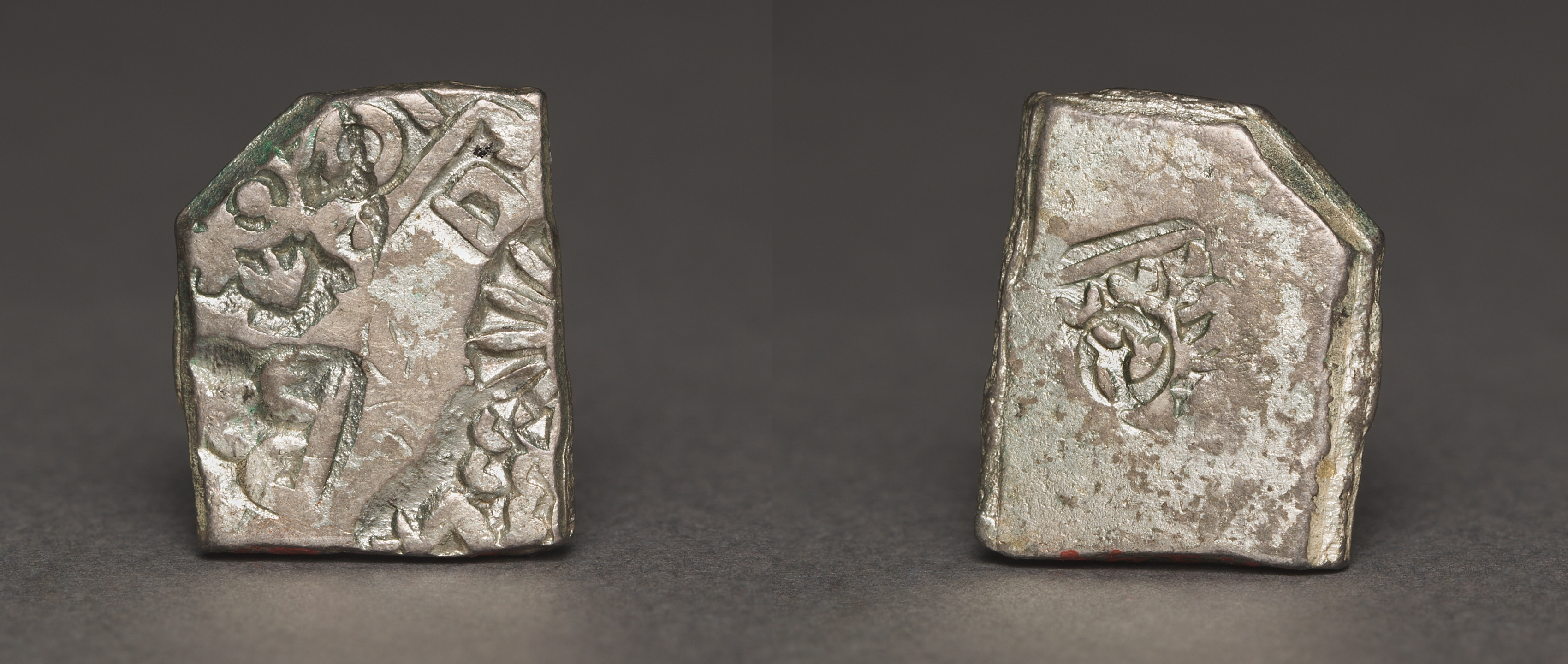The Cleveland Museum of Art
Collection Online as of April 20, 2024

Punch-Marked Coin
400–300 BCE
Location: not on view
Did You Know?
Early Indian coins were cut in irregular shapes and punched with a wide range of marks. The deep punches would prove that the coin was pure silver all the way through.Description
After Alexander of Macedon succeeded in conquering Egypt and Persia in 331 BC, his ambition to rule the known world led him further east across Bactria in Afghanistan, through the Hindu Kush mountain pass, and into India. There he succeeded in defeating all the local kings of the region until his men, on the brink of mutiny, insisted that they return to Greece. Alexander left governors in charge of his territories, and after his death in 323 BC, his governors became independent kings, establishing Hellenistic cities and a Greek cultural base in the region, which lasted for almost 200 years. Native Indian coinage was marked with symbols associated with the place where they were issued.- ?-1967Sri B. D. Dwivedi given to the Cleveland Museum of Art1967-The Cleveland Museum of Art, Cleveland, OH
- Year in Review: 1968. The Cleveland Museum of Art, Cleveland, OH (organizer) (January 29-March 9, 1969).
- {{cite web|title=Punch-Marked Coin|url=false|author=|year=400–300 BCE|access-date=20 April 2024|publisher=Cleveland Museum of Art}}
Source URL:
https://www.clevelandart.org/art/1967.243